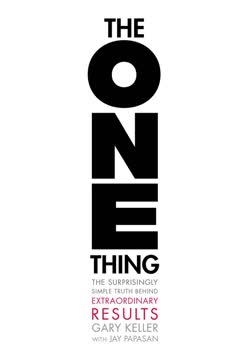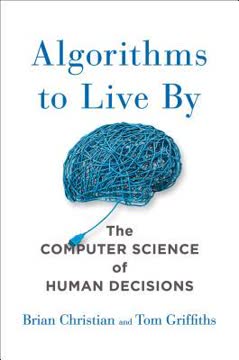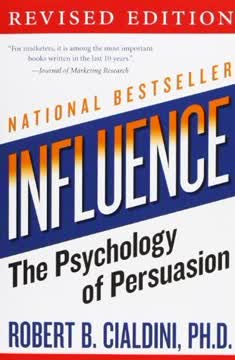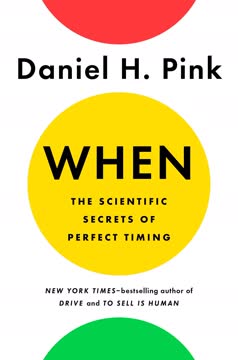Key Takeaways
1. Memes are units of cultural transmission that evolve like genes
A meme in the traditional, biological sense is simply a "unit of idea" or a "unit of culture."
Memes as cultural DNA. Just as genes replicate and mutate to spread beneficial traits, ideas and cultural elements (memes) evolve and propagate through social networks. This concept, introduced by Richard Dawkins, helps explain how trends, jokes, and even brand messages spread online.
Meme machines. The format or vehicle that carries a meme (e.g., image macro, video) is crucial to its success. Effective meme machines are:
- Easily shareable
- Quickly understood
- Adaptable to different contexts
- Resistant to degradation over multiple sharing generations
Understanding meme evolution can help marketers create more engaging, shareable content that resonates with target audiences and spreads organically through social networks.
2. Social media platforms shape user behavior and self-expression
Different social network structures satisfy different social and psychological needs for us.
Platform architecture matters. The way social networks are structured - how users are identified and connected - profoundly influences behavior and self-expression. This creates distinct psychological environments:
- Ego networks (e.g., Facebook): Users present managed versions of themselves to offline connections
- Superego networks (e.g., Instagram): Users showcase idealized selves to both friends and strangers
- Id networks (e.g., Reddit): Anonymous users organize around interests, fostering candid expression
Tailoring content to context. Brands must understand these dynamics to create resonant content for each platform:
- Ego: Help users represent themselves to friends
- Superego: Aid in aspirational self-expression
- Id: Facilitate exploration and community building
By aligning content with the psychological needs met by different platforms, brands can more effectively engage users and drive meaningful interactions.
3. Right-brain networks foster exploration and community
To engage people's right brains, create something explorable.
Embracing the unknown. Right-brain networks, often anonymous and interest-based, tap into users' curiosity and desire for novel experiences. These platforms prioritize community over individual identity.
Successful right-brain engagement strategies:
- Create open-ended experiences that invite participation
- Develop tools that empower community creativity
- Facilitate genuine conversations around shared interests
- Provide depth and substance, not just quick-hit content
Examples of effective right-brain campaigns:
- Reddit's r/Place collaborative art project
- Adobe's r/Layer drawing experience
- Audi's "Think Faster" AMA series
By fostering exploration and community-building, brands can create deeper, more meaningful connections with users in right-brain spaces.
4. Left-brain networks facilitate self-representation and identity
In left brain territory, known or unknown, we want to provide content that lends itself to self-representation and expression of identity.
Digital clothing. On left-brain networks like Facebook and Instagram, users carefully curate their online personas. Content becomes a form of self-expression, akin to choosing an outfit.
Strategies for left-brain engagement:
- Create badgeworthy content users want to associate with
- Develop shareable content that helps users connect with friends
- Balance aspirational messaging with relatable, everyday content
- Provide tools for personalization and creative expression
Examples:
- Dove's Real Beauty campaign
- Beats by Dre's "Straight Outta Somewhere" meme generator
- Ziploc's shareable life hacks and recipes
By helping users represent themselves authentically and connect with others, brands can become valued parts of users' online identities.
5. Successful social campaigns balance brand meaning and user value
Good strategists and creatives will evaluate their ideas at multiple levels of analysis.
Beyond the brand bubble. Effective social campaigns don't just promote the brand - they provide genuine value to users and fit naturally into the social ecosystem.
Key considerations:
- Does the idea grab attention in a cluttered feed?
- How does it connect to broader cultural conversations?
- Is the content easily shareable and accessible?
- Does it feel native to the platform and audience?
Balancing act. Great campaigns find synergy between:
- Brand objectives
- User needs and interests
- Platform-specific behaviors
- Cultural relevance
Examples:
- Old Spice's D&D "Gentleman Class"
- Coca-Cola's Marvel character matchup thread
- UNIQLO's organic Reddit engagement
By focusing on user value and cultural fit alongside brand goals, campaigns can drive both engagement and brand equity.
6. Timing and relevance matter, but aren't everything in social media
Timeliness is important for a particular kind of content. It's important for content related to events that, in the words of The Office character Jim Halpert, "if you didn't see them live, you wouldn't really care that you didn't see them at all."
Beyond the moment. While timely content can drive engagement, obsessing over real-time marketing often leads to shallow, forgettable content. A more sustainable approach balances:
- Timely, reactive content (20%)
- Evergreen, value-driven content (80%)
Strategies for balancing timeliness and lasting impact:
- Develop a content calendar with flexibility for timely insertions
- Create "stock" content that can be quickly adapted to current events
- Focus on building a consistent brand voice and valuable content library
- Use timing as a tactic within a broader strategy, not as the strategy itself
Example: Oreo's "Dunk in the Dark" Super Bowl tweet was brilliant, but their long-term success comes from consistently engaging, on-brand content.
7. Authenticity and meaningful engagement build lasting brand relationships
Social media pushes us to be more than transparent—it requires us to act in accordance with what we say.
Walking the talk. In the age of social media, brands can't just tell stories - they must live them. Authenticity and meaningful engagement are crucial for building trust and loyalty.
Key principles:
- Align actions with brand messaging
- Engage in two-way conversations, not just broadcasting
- Admit mistakes and show vulnerability when appropriate
- Demonstrate genuine interest in user feedback and ideas
Examples of authentic engagement:
- Patagonia's environmental activism
- Wendy's witty, personality-driven Twitter presence
- Airbnb's host community initiatives
By consistently demonstrating authenticity and fostering real connections, brands can build resilient relationships that withstand short-term challenges and drive long-term loyalty.
8. Social listening informs effective social media strategies
Social listening is absolutely critical, and it should be considered an ongoing part of any brand's social media strategy. It should occur at the level of trend, of category, of brand, and of content itself.
Tuning in to conversations. Social listening goes beyond monitoring mentions - it's about understanding the broader context of conversations around your brand, industry, and audience interests.
Key areas for social listening:
- Brand perception and sentiment
- Competitor activity and positioning
- Industry trends and emerging topics
- Content performance and engagement patterns
- Customer pain points and desires
Tools and techniques:
- Social media monitoring platforms (e.g., Sprout Social, Hootsuite)
- Manual community engagement and observation
- Sentiment analysis and topic modeling
- Customer surveys and feedback loops
By developing a robust social listening practice, brands can stay agile, identify opportunities, and create more relevant, impactful content.
9. Channel selection should align with brand goals and resources
Choose as many social channels as can be well executed. Less is more when strapped for resources. One or two great brand presences will almost always trump a handful of mediocre ones.
Quality over quantity. It's tempting to be everywhere, but spreading resources too thin leads to inconsistent, ineffective presences. Instead:
- Assess brand goals and target audience
- Evaluate platform strengths and user behaviors
- Consider resource constraints (time, budget, expertise)
- Choose channels where you can consistently deliver value
Channel selection considerations:
- Audience demographics and psychographics
- Content format strengths (e.g., visual, text, video)
- Organic vs. paid reach potential
- Community-building capabilities
- Alignment with brand voice and identity
By focusing efforts on channels that align with brand goals and resources, companies can build stronger, more engaged communities and drive better results.
10. Performance marketing works best when grounded in brand meaning
For even the most performance-oriented marketing teams, a social media campaign should be rooted in the brand meaning and ensure that it is building toward long-term brand growth.
Beyond the click. While performance marketing often focuses on short-term metrics, the most effective campaigns balance immediate results with long-term brand building.
Strategies for brand-driven performance marketing:
- Develop creative that reflects core brand values and positioning
- Use storytelling techniques to make ads more memorable and engaging
- Align ad messaging with broader brand narratives
- Test different creative approaches while maintaining brand consistency
- Measure both short-term conversions and long-term brand impact
Example: Dollar Shave Club's viral video drove immediate subscriptions while establishing a distinct brand personality that fueled long-term growth.
By grounding performance marketing in brand meaning, companies can drive both immediate results and lasting customer relationships.
Last updated:
FAQ
What is The Hidden Psychology of Social Networks by Joe Federer about?
- Explores social media psychology: The book analyzes how evolutionary biology, psychology, and neuroanatomy shape user behavior on social networks.
- Focuses on online personas: It explains how people present different versions of themselves online, using Freud’s Id, Ego, and Superego as a framework.
- Examines memes and meme machines: Federer discusses how ideas (memes) spread through specific formats (meme machines) and their impact on engagement.
- Provides actionable brand strategies: The book offers practical advice for brands to create authentic engagement by understanding what motivates users.
Why should I read The Hidden Psychology of Social Networks by Joe Federer?
- Deep psychological insights: The book links social media behavior to scientific theories, offering a unique perspective for marketers and communicators.
- Practical marketing strategies: It provides tested principles and real-world case studies to help brands resonate authentically with audiences.
- Clarifies online identity: Readers gain a nuanced understanding of how online personas affect content creation and interaction.
- Timeless relevance: By focusing on human behavior rather than just technology, the book’s strategies remain applicable despite changing platforms.
What are the key takeaways from The Hidden Psychology of Social Networks by Joe Federer?
- Different networks, different mindsets: Understanding the psychological differences between Id, Ego, and Superego networks is crucial for effective engagement.
- Balance novelty and consistency: Brands must establish credibility before introducing novelty to avoid confusing or alienating audiences.
- Social listening is essential: Ongoing monitoring of conversations helps brands stay relevant and avoid biases.
- Right and left brain strategies: Successful campaigns integrate both authentic experiences (right brain) and shareable stories (left brain).
How does Joe Federer define and explain "memes" and "meme machines" in The Hidden Psychology of Social Networks?
- Memes as cultural units: Memes are ideas or units of culture that can be transmitted between brains, following Richard Dawkins’s definition.
- Meme machines as formats: Meme machines are the formats or mediums (like image macros, videos, or text posts) that carry and spread memes.
- Format matters: The efficiency and accessibility of a meme machine greatly influence a meme’s ability to propagate and engage.
- Evolution of meme machines: Meme machines adapt and evolve to become more effective at delivering memes in competitive social media environments.
What are Id, Ego, and Superego networks according to The Hidden Psychology of Social Networks by Joe Federer?
- Ego networks (managed self): Platforms like Facebook and Snapchat, where users present a version of themselves consistent with their real-life identity.
- Superego networks (ideal self): Instagram and Twitter, where users curate aspirational or idealized versions of themselves for a broader audience.
- Id networks (true self): Anonymous or pseudonymous spaces like Reddit and 4chan, where users express themselves freely without offline identity constraints.
- Content implications: Each network type requires different content strategies to match user mindsets and behaviors.
How does The Hidden Psychology of Social Networks by Joe Federer apply Freud’s Id, Ego, and Superego to online behavior?
- Freud’s model as framework: Federer uses the Id, Ego, and Superego to explain how users present themselves differently across social networks.
- Ego as managed self: Users curate content to maintain social reputation among known contacts.
- Superego as ideal self: Users seek to express aspirational identities and gain social validation from a wider audience.
- Id as true self: Users engage candidly and explore interests without the constraints of offline identity, fostering authentic community interactions.
What is the difference between right brain and left brain networks in The Hidden Psychology of Social Networks by Joe Federer?
- Right brain (Id) networks: Focus on exploration, novelty, emotion, and direct experience, supporting candid and community-driven engagement.
- Left brain (Ego/Superego) networks: Emphasize representation, structure, identity, and social signaling, favoring familiar and aspirational content.
- Content strategy implications: Brands should balance right brain-driven novelty with left brain-driven consistency for maximum engagement.
- Platform alignment: Id networks align with right brain functions, while Ego and Superego networks align with left brain functions.
How should brands tailor their content strategies for Id, Ego, and Superego networks according to Joe Federer?
- Ego networks: Provide relatable, useful, or emotionally resonant content that helps users represent themselves to their offline friends.
- Superego networks: Offer aspirational, badge-worthy content and leverage influencers to enhance users’ social status and credibility.
- Id networks: Engage communities with candid, value-adding content that respects anonymity and shared interests.
- Platform-appropriate content: Understanding these differences enables brands to resonate with users’ psychological states and social contexts.
What are the five principles for maximizing social media engagement in The Hidden Psychology of Social Networks by Joe Federer?
- Add value: Content should offer meaningful information, humor, or emotional connection to motivate sharing.
- Design effective meme machines: Formats must encapsulate the message fully and be easy to share without external context.
- Create personal connection: Use storytelling and narrative elements to make content memorable and relatable.
- Develop content for objectives: Set clear goals (engagement, clicks, shares) and measure performance accordingly.
- Maintain brand consistency: Ensure content aligns with brand identity to build equity, not just fleeting virality.
What role does social listening play in building a social media–savvy brand, according to The Hidden Psychology of Social Networks by Joe Federer?
- Critical for understanding: Social listening helps brands gather feedback and understand audience needs and channel dynamics.
- Avoiding biases: It prevents confirmation bias and perceptual blindness by encouraging a holistic view of social conversations, including negative feedback.
- Continuous process: Listening should be ongoing, from channel selection to content evaluation, enabling iterative improvements.
- Alignment across teams: Social listening ensures creative, strategy, and media teams are aligned with real audience insights.
How does Joe Federer recommend brands balance novelty and consistency in their social media strategies?
- Establish credibility first: Brands must build a consistent and credible identity before introducing novelty to avoid confusion or backlash.
- Controlled novelty: Small, thoughtful surprises can create memorable experiences without undermining trust.
- Transparent communication: When making changes, brands should openly explain their rationale to maintain audience trust.
- Examples provided: Campaigns like Nike’s SNKRS app and the Magic Castle Hotel’s Popsicle Hotline illustrate effective use of novelty.
What are some standout brand campaign examples from The Hidden Psychology of Social Networks by Joe Federer, and what do they illustrate?
- Dove Real Beauty Sketches: Resonated in Ego networks by helping women express self-acceptance, driving massive Facebook shares.
- Beats By Dre “Straight Outta Somewhere”: Enabled users to create personalized badges, sparking widespread sharing and cultural relevance in Superego networks.
- UNIQLO and Audi on Reddit: Built trust and engagement in Id networks through candid, community-focused interactions.
- Baskin-Robbins Stranger Things ARG: Created deep, right brain engagement through an immersive alternate-reality game.
- Squatty Potty viral ad: Used humor and self-awareness to overcome product stigma and drive viral sharing.
How can brands integrate right brain and left brain strategies for effective social media campaigns, according to Joe Federer?
- Create authentic experiences: Start by fostering deep, candid engagement in right brain (Id) networks through community-driven behaviors.
- Tell compelling stories: Translate these experiences into shareable narratives for left brain (Ego/Superego) networks, helping users represent themselves.
- Synergistic approach: Combining both strategies maximizes reach and impact, ensuring messaging is both genuine and widely shareable.
- Case study example: Old Spice’s Dungeons & Dragons character class campaign exemplifies this integration of authentic experience and storytelling.
Review Summary
Readers find The Hidden Psychology of Social Networks insightful and valuable for marketers. They appreciate the author's use of Freudian concepts to explain social media behavior across platforms. The book offers practical strategies for creating engaging content and understanding user psychology. Reviewers highlight the importance of adapting content to different platforms and the book's exploration of human behavior in digital spaces. While some find it dense, most consider it a must-read for marketers, providing fresh perspectives on digital marketing and social media engagement.
Similar Books










Download PDF
Download EPUB
.epub digital book format is ideal for reading ebooks on phones, tablets, and e-readers.




